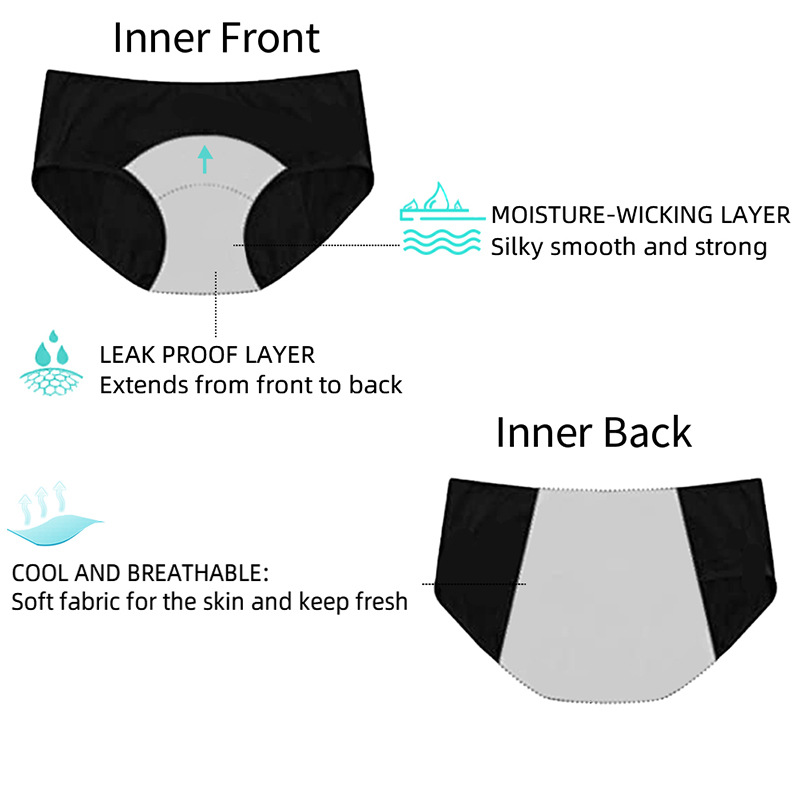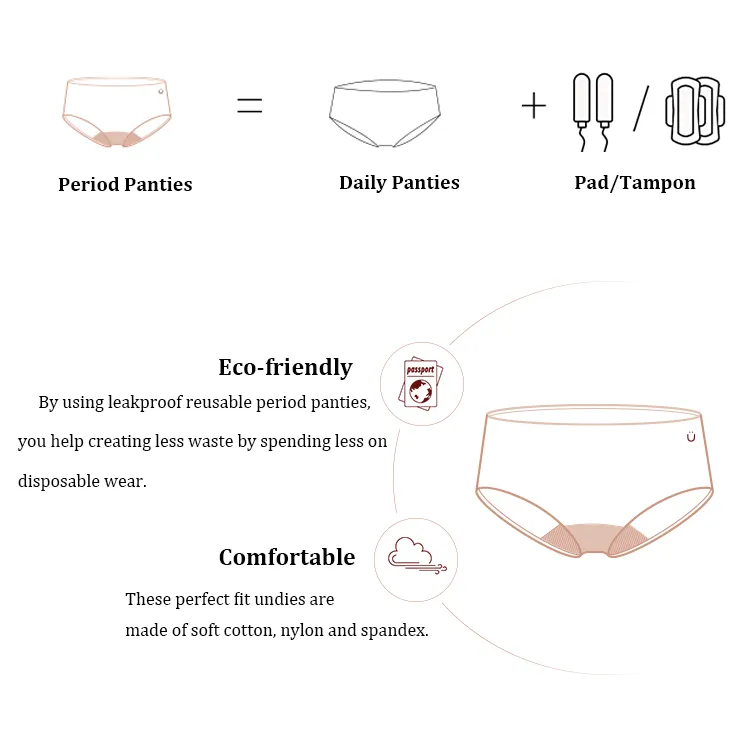What is the manufacturing process of period panties?
1. Fabric selection: According to the requirements, select the fabric suitable for the function. For the requirements of high absorption and anti-side leakage, commonly used fabric materials can include natural fibers with good moisture absorption and perspiration properties (such as cotton, bamboo fiber, etc.), super absorbent fibers (such as microporous fibers, linen, etc.), antibacterial materials (such as silver fiber, etc.) and so on. The choice of fabric hierarchy also affects absorbency and side leakage.
2. Fabric supply and production: production purchasers provide fabric selection information to suppliers, and place orders for the fabrics required for production. Purchasing needs to do a series of tracking. Suppliers produce fabrics with high absorbency and anti-side leakage functions according to requirements to ensure that the quality of fabrics meets the standards.
3. Fabric processing and preparation: After the fabric arrives at the manufacturing plant, it will undergo further processing and preparation. This may include pre-treatment of fabrics such as washing, bleaching, dyeing, etc.
4. Cutting and sewing: The design and production master cuts the fabric according to the design drawing and size, and assembles it into various parts of the underwear.
5. Assembling the various parts of the underwear: put together and assemble the various parts, and add the necessary hierarchical structure to achieve high absorbency and anti-side leakage functions. This may include embedding superabsorbent materials, waterproof barriers, leak-proof layers, etc. and ensuring their placement and tightness.
6. Finishing and quality control: After the production of underwear is completed, the finishing process is carried out, such as thread cutting, leveling, ironing, etc., to improve the appearance and quality of physiological underwear.
7. Packaging and shipping: After passing the quality inspection, the underwear will be packed, and then shipped in the cabinet.

